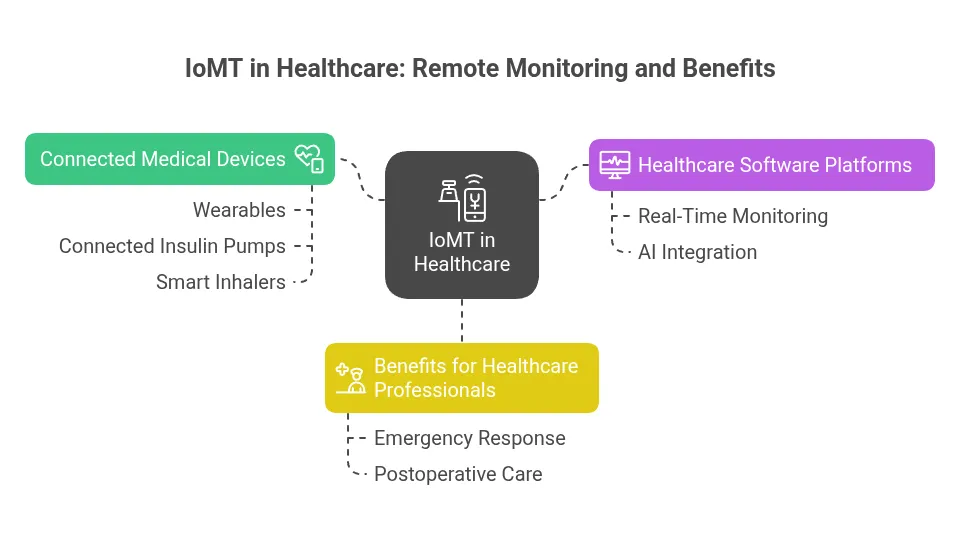Table of Contents
In 2025, the digital revolution is transforming the healthcare software industry. All this is getting driven because of Artificial Intelligence (AI) and Machine Learning (ML), along with IoMT (Internet of Medical Things).
By using these technologies, they can enable smarter diagnostics, real-time patient monitoring, and better data-driven-decision making.
With all this tech, the future scope of AI in healthcare is growing rapidly and bringing huge changes in the market.
And with this, the software solutions are becoming more personalized, predictive, and preventive.
Let’s explore this in depth.
AI ML in Healthcare Diagnostics And Predictive Care
AI is now at the core of healthcare software that is helping in streamlining diagnosis, reducing human error, and improving outcomes.
Now, in the medical field with advanced algorithms trained on millions of clinical records and imaging data can detect anomalies faster and more accurately than any traditional methods.
Here’s how it is helpful:
- AI Diagnosis in Healthcare helps in identifying diseases like cancer, cardiovascular disorders, and any sort of neurological issues.
- Predictive Analysis that gets powered by AI and ML in Healthcare enables doctors to foresee potential health risks and take preventive actions.
IoMT (Internet of Medical Things) For Remote Monitoring

The Internet of Medical Things refers to a network of connected medical devices and sensors that continuously collect patient health data.
Now, all these devices are getting integrated into healthcare software platforms, enabling providers to monitor patients in real time.
It is getting used in smart devices like:
- Wearables that track vital data
- Connected insulin pumps
- Smart inhalers are improving chronic disease management and reducing unnecessary hospital visits.
IoMT empowers healthcare professionals to:
- Respond quickly to emergency alerts
- Manage postoperative care remotely
By integrating AI and IoMT, healthcare software can detect subtle changes in a patient’s condition and trigger timely interventions.
Blockchain And Data Frequency
With time, healthcare is getting more digitalized, and more secure and efficient data handling is critical.
- Protect patient data privacy
- Enable secure sharing across different stakeholders
- Ensure real-time data integrity
Data Frequency – the rate at which the new data is generated – is rapidly increasing.
AI systems are trained to process and analyze these high-frequency data streams for meaningful patterns, making real-time decision-making a reality.
Transforming Healthcare Software And Innovations
The future holds a lot of things in the healthcare industry that include:
- Autonomous robotic surgeries
- AI-powered mental health tools
- Personalized medicine using genomic data
- Smart ICUs driven by real-time analytics
- AI augmented radiology and pathology
That’s why the benefits of machine learning in healthcare now go beyond diagnosis.
ML is being applied to automate administrative workflows, improve patient planning, and forecast public health trends.
Transforming Healthcare software will now become proactive rather than reactive – you can prevent illness before it occurs.
FAQs
Q1. How Is AI Used In Healthcare Software Development?
AI is now aggressively getting used in building intelligent healthcare software that can diagnose diseases, recommend treatments as per requirement, automate tasks easily, and provide you with real-time insights based on patient data.
Q2. What Is IoMT?
IoMT refers to a network of connected medical devices that collect and transmit patient data to healthcare systems for real-time monitoring and remote care.
Q3. How Are Emerging Technologies Changing Healthcare?
A lot of new tech like AI, ML, IoMT, and Blockchain are making healthcare more efficient, personalized, and secure all across the globe. It is improving both patient outcomes and provider performance.